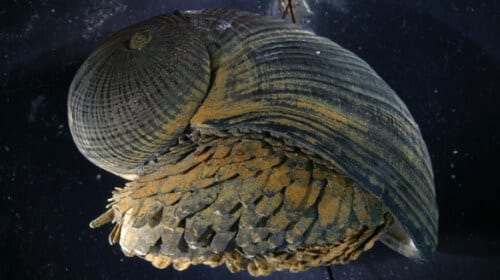One unique mollusk from the depths of the ocean, with a shell coated with iron particles, is an inspiration for building better armor for soldiers and vehicles.
By: Ofir Marom

A snail's shell might not sound like the ideal source of inspiration for the defense system, but the scaly-foot gastropod is no ordinary snail. The snail was only discovered in 2001 near hydrothermal vents, on the bottom of the Indian Ocean, about 2,420 meters below sea level. In its natural environment, near underwater volcanic vents, the snail faces high temperatures, rapid changes in temperature, high acidity and attacks by predators such as crabs, which try to crush it with their pincers, if necessary - for days, until it breaks.
Researchers from MIT who examined the snail's armor (the shell) found that it consists of three different layers, each of which contributes differently to its effectiveness. The outer layer contains particles of iron sulfide (Fe3S4) that originate from the hydrothermal emanations. So far, this snail is the only known animal that has this substance in its structure. At the time of impact, as happens during an attack by occasional predators, the outer layer of the armor cracks in tiny cracks, which spread around the iron sulfide particles that are embedded in it. In this way, it is guaranteed that no larger cracks will form in the shell, which could hasten its collapse. The second layer, thicker, is made of organic material in a spongy structure. The researchers believe that its function is to absorb the mechanical energy during an attack and keep the lower, fragile layer of the armor from cracking. This is a critical function, because the acidic water can seep into the inner layer made of calcium carbonate, quickly dissolving it at the fracture points and thus causing small fragments to grow and reach the snail's body.
Like snails, the human body naturally strives to absorb the impact energy in its outer layers only. The researchers (in a study partially funded by the US military) hope to apply the insights from the research in a wide variety of uses such as body armor, helmets and even as a cover for Arctic pipes that are regularly damaged by glaciers.
This example illustrates once again, the benefit we can derive from learning the organisms around us, and in particular those that have adapted to a challenging living environment like that of the snail.

One response
Please update when someone implements it